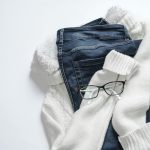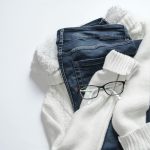When you're selecting materials for your athletic wear, you might wonder if microfleece is the right choice. Given its properties, like warmth without bulk and moisture-wicking capabilities, microfleece seems to offer several benefits that could enhance your performance. However, it's important to weigh these advantages against potential drawbacks that might affect your comfort and effectiveness during intense activities. So, is microfleece truly the best option for your active lifestyle, or are there alternatives worth considering?
Table of Contents
What Is Microfleece?
Microfleece is a lightweight, soft fabric made from polyester that offers warmth without the bulk, making it a popular choice for layering in athletic wear. You'll appreciate how this fabric feels against your skin—it's soft and comfortable, perfect for long hours of movement. Microfleece is designed to wick away moisture, which means it helps keep you dry and comfortable even during intense workouts.
The breathable nature of microfleece ensures that you won't overheat, a crucial factor when you're pushing your limits. Plus, it's quick-drying, so if you happen to work up a sweat or get caught in the rain, you won't be stuck in damp clothing for long.
When choosing athletic wear, you're likely looking for something that balances functionality with comfort, and microfleece checks both boxes. It's lightweight enough for layering under jackets or outerwear, while still providing the insulation you need. Overall, you can count on microfleece to enhance your athletic wardrobe, allowing for easy movement and protection against the elements. Whether you're running, hiking, or engaging in other outdoor activities, microfleece is a fabric worth considering.
Key Properties of Microfleece
Three key properties make microfleece an excellent choice for athletic wear: moisture-wicking ability, lightweight warmth, and breathability. These characteristics help keep you comfortable and focused on your performance, whether you're running, hiking, or engaging in any outdoor activity.
Here's a quick comparison to illustrate these properties:
| Property | Description |
|---|---|
| Moisture-Wicking | Draws sweat away from your skin, keeping you dry. |
| Lightweight Warmth | Provides warmth without adding bulk, allowing for easier movement. |
| Breathability | Allows air circulation, helping regulate body temperature. |
When you're in active pursuits, you want gear that can handle sweat and temperature changes. Microfleece shines in these areas, offering a balance between warmth and comfort. The fabric's design lets it trap body heat while remaining light, so you won't feel weighed down. Additionally, its breathable nature keeps you from overheating during exercise. If you're looking for athletic wear that meets your dynamic needs, microfleece could be the perfect fit.
Advantages for Athletic Use
When you choose microfleece for your athletic wear, you're in for some great benefits.
Its moisture-wicking properties help keep you dry during intense workouts, while its lightweight and breathable design ensures you stay comfortable.
This combination makes microfleece a smart option for any active lifestyle.
Moisture-Wicking Properties
Because it effectively pulls sweat away from your skin, microfleece enhances comfort and performance during intense athletic activities. This moisture-wicking property keeps you dry, which is crucial when you're pushing your limits.
When sweat accumulates, it can weigh you down and lead to chafing, but microfleece helps counteract that.
You'll appreciate how microfleece absorbs moisture and moves it to the fabric's surface, where it can evaporate quickly. This process allows for a cooler feeling during workouts, especially when you're engaged in high-intensity exercises.
Staying dry can reduce distractions, enabling you to focus on your performance instead of discomfort.
Additionally, unlike some materials that can hold onto moisture, microfleece allows sweat to escape more efficiently, ensuring you won't be stuck in a damp garment.
This ability to manage moisture effectively also helps in regulating your body temperature, which is vital for maintaining endurance in prolonged activities.
Lightweight and Breathable
Microfleece stands out for its lightweight and breathable qualities, making it an ideal choice for athletes seeking optimal comfort during their workouts. When you wear microfleece, you'll notice how it feels almost weightless, allowing you to move freely without any restrictions. This fabric doesn't just feel good; it works hard to keep you cool and comfortable even during intense activities.
Temperature Regulation: Microfleece traps just the right amount of warmth while allowing excess heat to escape, keeping you from overheating on those strenuous runs or workouts.
Enhanced Range of Motion: Because it's so lightweight, microfleece lets you stretch and twist with ease, enhancing your performance without any added bulk.
Quick Drying: If you get sweaty or caught in light rain, microfleece dries rapidly, which means you won't stay damp for long, reducing the chances of chills.
With these advantages, microfleece isn't just a cozy fabric; it's a practical choice for serious athletes looking to elevate their training experience.
Disadvantages and Limitations
While microfleece offers some benefits, you'll find it does have notable downsides. For instance, moisture retention can become a challenge during intense workouts.
Its limited breathability might leave you feeling overheated. Additionally, durability mightn't hold up against rigorous activity, so it's essential to weigh these factors carefully.
Moisture Retention Challenges
One key challenge with microfleece is its tendency to retain moisture, which can leave you feeling damp and uncomfortable during intense workouts. Unlike other fabrics designed to wick sweat away from your body, microfleece can cling to your skin once it gets wet.
Picture this scenario: As you push through those last few miles, the microfleece holds on to the moisture instead of helping you feel dry and refreshed. After your workout, that damp fabric can turn chilly, making it harder for you to warm up. The uncomfortable sensation of dampness can detract from your performance, keeping you focused on your discomfort instead of your goals.
This moisture retention can be particularly problematic in colder weather, where a wet fabric can lower your body temperature. If you're someone who tends to sweat a lot, microfleece mightn't be the best choice for athletic wear. You could end up battling discomfort rather than enjoying your workout.
Ultimately, it's essential to consider these moisture retention challenges when deciding if microfleece is right for you.
Limited Breathability Issues
Breathability is another limitation of microfleece, making it less ideal for high-intensity athletic activities. When you're pushing your limits during a workout, you need fabric that allows air to circulate, helping to regulate your body temperature.
Microfleece, with its dense fibers, doesn't promote optimal airflow, which can lead to overheating. As you sweat, you may find that microfleece traps moisture close to your skin instead of allowing it to evaporate quickly.
This can leave you feeling clammy and uncomfortable, hindering your performance. While microfleece is excellent in cooler weather, its limited breathability can be a significant drawback when the intensity ramps up or the climate warms.
If you're opting for microfleece in your athletic wardrobe, it's crucial to consider the type of activities you'll be doing. For low-impact exercises like yoga or walking, it might serve you well.
However, for running or high-energy sports, you might want to look towards more breathable fabrics like polyester blends or merino wool that wick moisture away and allow for better ventilation. Choosing the right fabric for your workout can make all the difference in your comfort and performance.
Durability in Workouts
Durability is a key concern when considering microfleece for workouts, as it may not withstand the rigors of high-impact activities as well as other athletic fabrics. If you're pushing your limits during your workouts, microfleece might let you down.
Pilling and Wear: Over time, the fabric can develop small balls of fuzz, known as pilling. This not only looks unappealing but can also compromise the material's integrity.
Tear Resistance: During intense movements, microfleece can be less resistant to rips and tears. If you're into training that involves sudden jumps or stretches, the risk of damaging the fabric is higher.
Moisture Management: While microfleece keeps you warm, it struggles to wick away moisture effectively. This can lead to a heavy, damp feel during prolonged workouts, affecting your performance.
Breathability and Moisture Management
Microfleece excels at regulating temperature and wicking moisture away from your skin during intense workouts. This lightweight fabric creates a balance between warmth and breathability, making it an excellent choice for sweat-inducing activities.
As you push your limits, microfleece efficiently draws sweat away from your body, helping to keep you dry and comfortable.
When you wear microfleece, you'll likely notice how it prevents that clammy feeling that can occur with other materials. Its ability to disperse moisture means you're less likely to experience chafing or irritation, allowing you to focus on your performance.
Plus, microfleece's quick-drying properties mean that even if you do perspire, it won't stay damp for long, keeping you in the zone instead of distracted by discomfort.
Another benefit of microfleece is its breathability. The fabric's construction allows for airflow, which cools you down as your body temperature rises.
Best Athletic Uses for Microfleece
When it comes to athletic wear, microfleece shines in activities like running, hiking, and outdoor yoga, where both warmth and moisture-wicking properties are essential. Its lightweight nature makes it perfect for layering, keeping you cozy without feeling weighed down.
- Running in Chilly Weather: Microfleece provides the insulation you need during early morning jogs, allowing you to maintain warmth without overheating as you get into your stride.
- Hiking in variable conditions: As temperatures fluctuate, a microfleece mid-layer keeps you comfortable by trapping heat and combating wind chill. Plus, its ability to wick away sweat ensures you stay dry on the trails.
- Outdoor Yoga: When you're practicing yoga outdoors, microfleece offers softness and warmth during poses, especially in cooler climates. It gives you the freedom to move while providing necessary coverage.
Opt for microfleece for these activities to enhance your performance and comfort. You'll appreciate its functionality as you push your limits, allowing you to focus on your athletic goals.
Frequently Asked Questions
Can Microfleece Be Recycled After Use?
Yes, microfleece can be recycled, but it depends on local recycling facilities. You should check if your area accepts it. Always look for recycling programs that handle synthetic fabrics to ensure proper disposal.
Is Microfleece Safe for Sensitive Skin?
If you've got sensitive skin, microfleece can be a safe choice. It's typically soft and non-irritating, but you should always test a small patch first to ensure it doesn't cause any allergic reactions or discomfort.
How Does Microfleece Compare to Merino Wool?
When you compare microfleece to merino wool, you'll find microfleece is lightweight and quick-drying, while merino provides natural insulation and moisture-wicking. Each has unique benefits, depending on your specific needs and activity levels.
What Is the Lifespan of Microfleece Athletic Wear?
Microfleece athletic wear typically lasts around three to five years with proper care. To maximize its lifespan, wash it gently, avoid fabric softeners, and store it away from direct sunlight. You'll appreciate the durability!
Is Microfleece Suitable for Warm Weather Activities?
Microfleece isn't ideal for warm weather activities. It retains heat and can cause overheating. For hot conditions, you'll want lightweight, breathable fabrics that promote airflow and wick moisture away from your skin for better comfort.
- How Does Ring Spun Cotton Affect Garment Fit and Shape Retention? - August 13, 2024
- What Are the Challenges in Producing Ring Spun Cotton? - August 13, 2024
- Is Ring Spun Cotton Suitable for Plus-Size Clothing? - August 13, 2024







